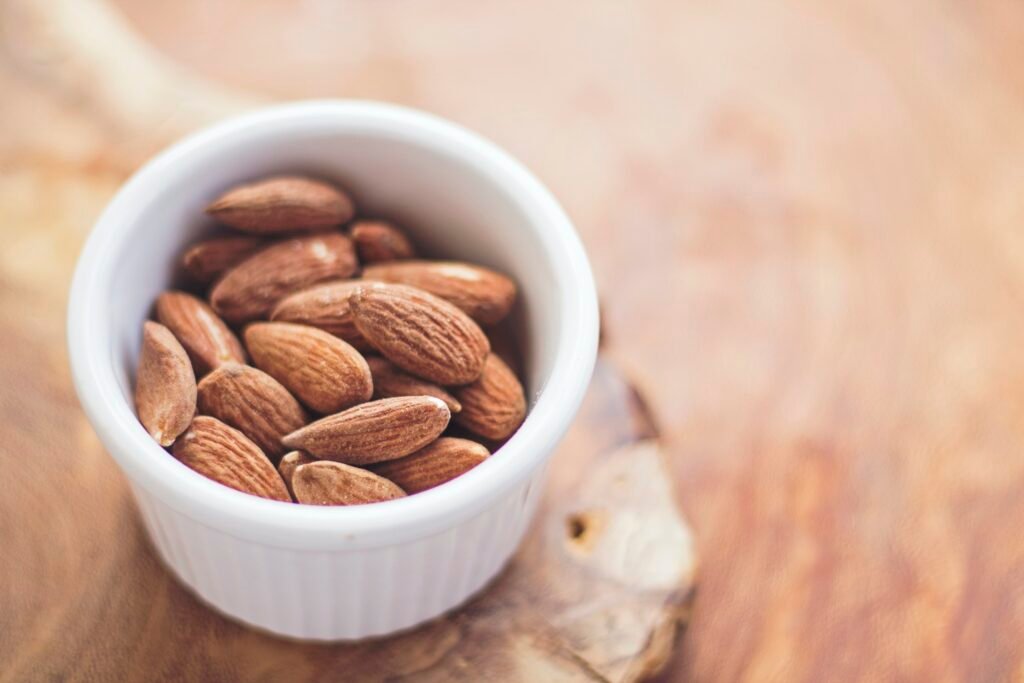Are you tired of relying solely on medication to manage your pain? In a world where traditional medicine is commonly prescribed, many people are searching for alternative methods to alleviate their discomfort. The use of alternative medicine for pain management has been gaining popularity in recent years as individuals seek out natural remedies and holistic approaches to their well-being. In this article, we will explore the possibilities and potential benefits of alternative medicine in helping you find relief from pain.
Overview of Alternative Medicine
Alternative medicine refers to a range of practices, therapies, and treatments that are not part of conventional medicine. These approaches focus on providing healing and promoting wellness by addressing the root causes of health issues, rather than solely treating symptoms. Alternative medicine takes a holistic approach, considering the physical, emotional, and spiritual aspects of an individual’s well-being. This comprehensive article explores the definition and types of alternative medicine, its philosophy and principles, and its role in pain management.
Definition and Types of Alternative Medicine
Alternative medicine encompasses a wide range of therapies and practices, each with its own unique approach and focus. Some common types of alternative medicine include Traditional Chinese Medicine (TCM), Ayurvedic medicine, herbal and botanical remedies, mind-body interventions, manipulative and body-based practices, and energy therapies. Each of these types offers a distinct set of principles, techniques, and treatments to promote healing and overall wellness.

Philosophy and Principles of Alternative Medicine
The philosophy of alternative medicine revolves around the belief that the body has an innate ability to heal itself. Alternative medicine practitioners emphasize the importance of treating the whole person, rather than just the symptoms of a specific condition. They believe that the mind, body, and spirit are interconnected, and disruptions in one aspect can impact overall health. The principles of alternative medicine focus on promoting balance, restoring energy flow, enhancing self-awareness, and supporting the body’s natural healing processes.
Pain Management with Alternative Medicine
Understanding pain and conventional treatments
Pain is a complex sensation that can arise from a variety of causes, such as injury, illness, or chronic conditions. Conventional pain management often involves the use of medications, physical therapy, and surgical interventions. While these treatments can be effective, they may also come with side effects and limitations.
Role of alternative medicine in pain management
Alternative medicine offers a range of approaches to pain management that can complement conventional treatments or serve as standalone therapies. Many alternative therapies focus on addressing the underlying causes of pain, rather than simply suppressing it. These methods aim to promote relaxation, reduce inflammation, improve circulation, and enhance overall well-being.

Mind-Body Interventions
Meditation and Mindfulness
Meditation and mindfulness practices have gained significant popularity in recent years, and for good reason. By training the mind to focus on the present moment and cultivate awareness, these practices can reduce stress, improve mental clarity, and enhance overall well-being. Research has shown that meditation and mindfulness can also be effective in managing chronic pain by reducing pain intensity, decreasing anxiety and depression, and improving quality of life.
Yoga and Tai Chi
Yoga and Tai Chi are ancient practices that combine movement, breathwork, and meditation. These mind-body practices can improve flexibility, strength, and balance while promoting relaxation and stress reduction. Both yoga and Tai Chi have been found to be beneficial in managing pain, particularly for conditions such as arthritis, fibromyalgia, and low back pain.
Hypnotherapy
Hypnotherapy is a therapeutic technique that uses guided relaxation, focused attention, and suggestion to promote healing and positive change. It can be a powerful tool in managing pain by helping individuals alter their perception of pain and enhancing their coping mechanisms. Research suggests that hypnotherapy can effectively reduce pain intensity and improve quality of life in individuals with chronic pain.
Manipulative and Body-Based Practices
Chiropractic Care
Chiropractic care focuses on the alignment of the spine and nervous system to promote overall health and well-being. Chiropractors use manual adjustments, spinal manipulations, and other techniques to address imbalances and alleviate pain. This approach is commonly used to treat conditions such as back pain, neck pain, and headaches.
Acupuncture
Acupuncture is a key component of Traditional Chinese Medicine, involving the insertion of thin needles into specific points on the body to promote the flow of energy, or qi. This ancient practice has been used for centuries to alleviate pain and treat various health conditions. Research suggests that acupuncture can be effective in managing chronic pain, including conditions such as osteoarthritis, migraine headaches, and fibromyalgia.
Massage Therapy
Massage therapy involves the manipulation of soft tissues in the body, including muscles, tendons, and ligaments. It promotes relaxation, relieves muscle tension, and improves circulation. Massage therapy has been shown to be effective in managing pain, particularly for conditions such as low back pain, arthritis, and fibromyalgia. Different techniques, such as Swedish massage, deep tissue massage, and trigger point therapy, can be tailored to address specific pain areas.

Herbal and Botanical Remedies
Traditional Chinese Medicine
Traditional Chinese Medicine (TCM) utilizes a combination of herbal medicines, acupuncture, dietary therapies, and other practices to restore balance and promote health. Herbal remedies play a significant role in TCM, with various plants, roots, and extracts used to address specific health conditions. Chinese herbs, such as ginseng, ginger, and turmeric, are believed to have anti-inflammatory, analgesic, and healing properties.
Ayurvedic Medicine
Ayurvedic medicine, originating from India, also incorporates herbal remedies as part of its holistic approach to health. Ayurvedic herbs, such as ashwagandha, turmeric, and holy basil, are used to improve digestion, balance energy, and reduce inflammation in the body. Ayurvedic practitioners tailor herbal remedies to an individual’s unique constitution and health needs.
Herbs and Supplements
In addition to the traditional systems of medicine, alternative medicine also utilizes herbs and dietary supplements from various cultures and traditions. Many herbs and supplements, such as turmeric, ginger, and omega-3 fatty acids, have shown promising effects in reducing inflammation, alleviating pain, and supporting overall health. However, it is important to consult with a healthcare professional before incorporating these remedies into a pain management regimen, as they may interact with medications or have contraindications.
Energy Therapies
Reiki
Reiki is an energy therapy that involves the gentle laying on of hands or hovering over the body to promote healing and balance. It is based on the belief that a universal life force energy flows through every individual and can be channelled to support healing and well-being. Reiki is often used to reduce stress, promote relaxation, and alleviate pain. While more research is needed, some studies have shown positive effects in pain management, particularly for cancer patients and individuals with chronic pain conditions.
Therapeutic Touch
Therapeutic Touch is a non-invasive energy therapy that involves the practitioner using their hands to assess and rebalance the energy field around the body. This therapy aims to promote relaxation, relieve pain, and support the body’s natural healing abilities. Therapeutic Touch has been used to manage pain in various settings, including hospitals, hospices, and rehabilitation centers.
Biofield Therapies
Biofield therapies focus on manipulating energy fields around the body to promote health and well-being. These therapies include practices such as qigong, Healing Touch, and Pranic Healing. While the mechanisms underlying biofield therapies are not fully understood, they have been used to manage pain, reduce stress, and promote overall wellness. Research in this area is still emerging, and more studies are needed to fully evaluate their effectiveness.

Alternative Medicine and Chronic Pain
Challenges in Managing Chronic Pain
Chronic pain is a complex and debilitating condition that can significantly impact an individual’s quality of life. Conventional pain management approaches often fall short in providing long-term relief, and individuals may be left with limited options and a reliance on medications. Additionally, chronic pain can take a toll on mental and emotional well-being, leading to anxiety, depression, and decreased overall functioning.
Effectiveness of Alternative Medicine for Chronic Pain
Alternative medicine offers an array of therapies and approaches that can be valuable in managing chronic pain. Many of these therapies focus on addressing the underlying causes of pain, promoting relaxation, reducing inflammation, and enhancing overall well-being. Research has demonstrated the potential effectiveness of various alternative approaches, such as acupuncture, mindfulness-based stress reduction, and herbal remedies. However, it is important to note that individual responses to alternative treatments may vary, and what works for one person may not work for another.
Integration of Alternative and Conventional Approaches
An integrated approach that combines alternative and conventional treatments may provide the best outcomes for individuals with chronic pain. This approach, often referred to as integrative medicine, recognizes the value of incorporating the strengths of both approaches to create a personalized treatment plan. Integrative medicine encourages collaboration between healthcare providers, allowing for a comprehensive and holistic approach to pain management. By combining therapies such as acupuncture, physical therapy, meditation, and medication, individuals can access a range of tools to address their unique pain needs.
Safety and Risks
Side Effects and Interactions
While alternative medicine therapies are generally regarded as safe, it is important to be aware of potential side effects and interactions. Some herbal remedies and supplements may interact with medications or have contraindications for certain medical conditions. It is crucial to consult with a healthcare professional or knowledgeable practitioner before incorporating any alternative therapies into a pain management regimen. Additionally, it is essential to ensure the quality and purity of herbal products to minimize the risk of contamination or adverse effects.
Regulation and Quality Control
The regulation and quality control of alternative medicine practices and products vary across different countries and regions. It is important to seek out qualified practitioners who have appropriate training and credentials in their respective fields. When considering herbal remedies or supplements, look for reputable manufacturers that adhere to strict quality control standards. Organizations such as the National Center for Complementary and Integrative Health (NCCIH) provide resources and information to help individuals make informed decisions about alternative medicine practices.

Research and Evidence
Existing Studies on Alternative Medicine for Pain Management
Numerous studies have explored the effectiveness of alternative medicine approaches for pain management. For example, research on acupuncture has shown positive results in reducing pain intensity, improving physical functioning, and enhancing quality of life in individuals with conditions such as osteoarthritis, migraines, and chronic low back pain. Mindfulness-based interventions, including meditation and yoga, have also demonstrated benefits in reducing pain and improving overall well-being. These studies provide valuable evidence supporting the use of alternative medicine in pain management.
Limitations and Controversies
Despite the growing body of research on alternative medicine, there are limitations and controversies that warrant further exploration. Some studies may have small sample sizes or methodological limitations, making it challenging to draw definitive conclusions. Additionally, there are ongoing debates surrounding the efficacy of certain alternative therapies and the placebo effect. It is important to critically evaluate the available evidence and discuss treatment options with healthcare professionals.
Promising Areas of Research
Research in alternative medicine for pain management is a rapidly evolving field, and there are several areas showing promise. For example, studies on the use of virtual reality and biofeedback techniques for pain management have provided encouraging results. Additionally, the exploration of novel botanical compounds and the potential use of cannabinoids in pain management are areas garnering attention. Continued research and clinical trials will help to further refine and validate the effectiveness of alternative medicine approaches in pain management.
Holistic Approach to Pain Management
Addressing Physical, Emotional, and Spiritual Well-being
A holistic approach to pain management recognizes that pain is not solely experienced in the body but also affects the mind and spirit. By addressing the physical, emotional, and spiritual aspects of pain, individuals can cultivate a more comprehensive and integrated healing process. This may involve incorporating practices such as meditation, counseling, spiritual exploration, and expressive therapies to support overall well-being.
Understanding the Mind-Body Connection
The mind-body connection plays a crucial role in the experience of pain. Stress, anxiety, and negative emotions can amplify pain signals, while relaxation, positive thinking, and emotional well-being can help alleviate discomfort. Alternative medicine approaches, with their emphasis on the interplay between mind, body, and spirit, can provide valuable tools for individuals to harness the power of the mind in managing and reducing pain.
In conclusion, alternative medicine offers a wide range of therapies and practices that can be utilized for pain management. From mind-body interventions to manipulative practices, herbal remedies, energy therapies, and more, there are diverse options available to individuals seeking alternative approaches to address their pain. While research and evidence continue to grow, it is important to approach alternative medicine as part of an integrated and personalized treatment plan, combining the strengths of both alternative and conventional approaches. By taking a holistic approach to pain management and understanding the mind-body connection, individuals can strive towards improved well-being and find relief from pain in a comprehensive manner.


